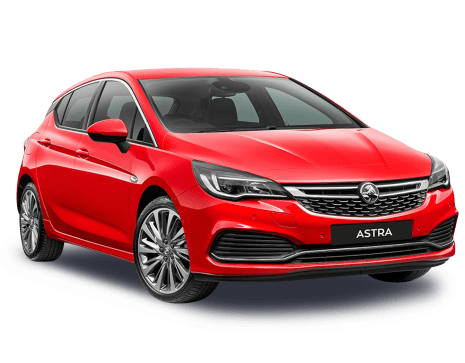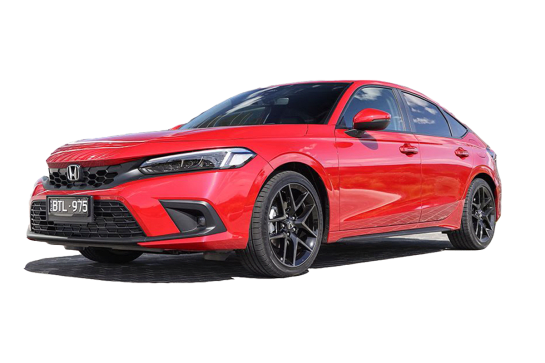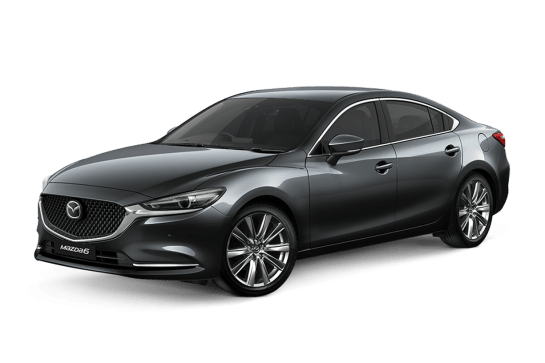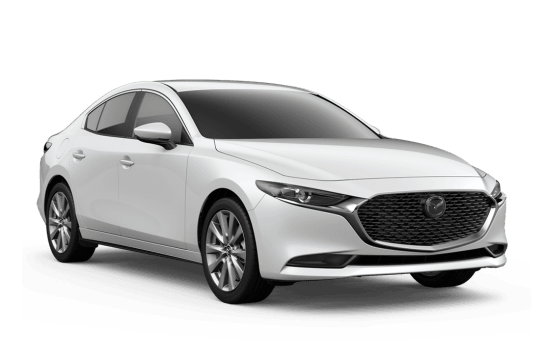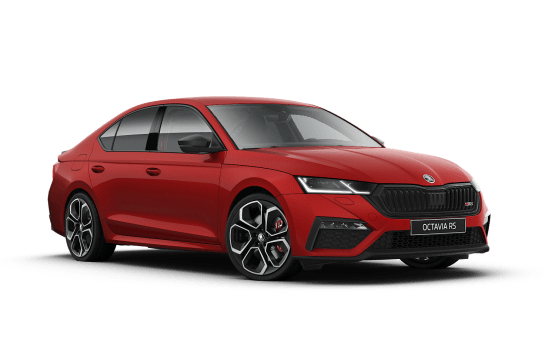
Hyundai Elantra VS Audi A3
Hyundai Elantra
Likes
- All variants fun to drive
- Sensible spec levels
- Standard multimedia set-up
Dislikes
- Optional safety on Go & Active
- No radar safety on Sport
- Polarising looks
Audi A3
Likes
- Quality look, quality feel
- Overall balance and driver involvement
- Proves there’s life in sedans and hatches
Dislikes
- Mild-hybrid interesting, but not a game-changer
- Active cruise extra cost in premium version. Should be standard
- Sportback looks don’t flatter the car
Summary
Hyundai Elantra
Is there a place for the humble sedan in 2019?
Hyundai seems to think so. And so for 2019 it has overhauled its Elantra range, with a polarising new look and interesting new trim levels.
Is the price right to push the Elantra to the forefront, though? Or is the i30’s less-famous sedan sibling destined to be overlooked?
We’ve spent some time in each of the Elantra’s four variants over the past few months to find out. Read on to see what’s what, and which one is our pick of the range.
| Safety rating | |
|---|---|
| Engine Type | 2.0L |
| Fuel Type | Regular Unleaded Petrol |
| Fuel Efficiency | 7.2L/100km |
| Seating | 5 seats |
Audi A3
If it was the original BMW 3-Series that invented the compact luxury car market segment all those years ago, then it’s probably fair to claim it was Audi’s A3 franchise that gave rise to the luxury small-hatch category.
On that basis, any new Audi A3 is news but, in the face of the SUV onslaught (including its own stablemate the Q3) the new small Audi has its work cut out for it.
With this update, there’s refreshed styling, a new interior layout and, for the launch of the new cars, two body styles, a conventionally styled sedan and what Audi calls the Sportback; fundamentally a five-door hatchback but with the German brand’s own flair plastered all over it.
Read more on Audi
- 2022 Audi A3 price and features: Australian pricing of new-gen Mercedes-Benz A-Class and BMW 1 Series rival creeps up
- Audi Q2 to be axed! BMW X2, Mini Countryman SUV rival to be discontinued as Audi heads further upmarket
- Audi Australia draws level with Mercedes-Benz, Lexus, Volvo, Jaguar Land Rover and Genesis with new five-year warranty for A1, A3, A4, A5, A6, A7, A8, Q2, Q3, Q5, Q7, Q8 and e-tron
As well as new connectivity and safety tech, the big news is the availability of a mild-hybrid driveline as well as a second powertrain option with more performance from a more conventional layout.
Interestingly, it’s that (mild) hybrid version of the A3 that represents the entry-level variant of the A3. A sign of the times? Perhaps.
As well as the two powertrains, there are two distinct chassis layouts, starting with a front-drive set-up and extending to the option of Audi’s Quattro all-wheel drive (AWD) system.
| Safety rating | |
|---|---|
| Engine Type | 1.5L turbo |
| Fuel Type | Premium Unleaded Petrol |
| Fuel Efficiency | 4.9L/100km |
| Seating | 5 seats |
Verdict
Hyundai Elantra7.4/10
The Elantra might be overlooked compared to its famous i30 stablemate, but it shouldn’t be. It’s every bit as entertaining to drive and just as well equipped.
It’s a shame active safety is on the option list for lower trim levels, and there’s no radar features on higher ones, and the unnecessary styling changes might polarise buyers. But the Elantra is otherwise a well-equipped and rewarding-to-drive package across the range.
Would you consider the Elantra over a Japanese competitor? Tell us what you think in the comments below.
Audi A37/10
Producing a car that takes the end result beyond appliance status is no given in a world car-park dominated by SUVs. But Audi has, over the last few decades, shown it is very good at doing just that and the latest incarnation of its A3 stalwart backs that up.
While it might take a bit of mental gymnastics to understand why the base model gets the hybrid driveline, or why the more expensive variant costs more to option with adaptive cruise-control, the fact remains these are driver’s cars from a company that understands that concept.
Yes, the A3 is a relatively expensive way to arrive at a compact hatch or sedan, but if you value the journey as much as the destination, it will all make sense.
While the technical aspects of the 35 TFSI are interesting, the extra power and all-weather grip of the AWD 40 TFSI seem to be worth the additional dollars to us. The A3 has always been a sporty alternative, meaning the sportiest version is the one for us.
CarsGuide attended this event as a guest of the manufacturer, with meals provided.
Design
Hyundai Elantra7/10
Despite being a facelift of the rather good looking 2016 Elantra, the 2019 car has taken a hard turn into the domain of triangles and right-angles.
The new styling has proved controversial in the CarsGuide office. The Go and Active seem to have largely abandoned many of the styling points which Hyundai has invested in over the past few years, with their vertically lined grilles and abundance of triangle light fittings.
All the extra space on the big, flat rear is taken up by the big-font ‘Elantra’ text and Hyundai logo, which is '90s-style in design.
The Sport and identical-from-the-outside Sport Premium are angry looking cars, with frowning LED light fittings, giant alloys and an abundance of angular black highlights.
The side skirts, rear diffuser and spindle grille give the Sport variants an impressive amount of presence on the road. There’s no spoiler to be found, though.
Inside, the Go and Active are a fairly basic offering, with the Active scoring a leather wheel and some extra niceties. The dash is a sea of grey, however, and the nice touchscreen is humbled by its old-school in-dash positioning.
The Sport grades add some more sophisticated touches, with sporty leather-trimmed seats, a flat-bottomed steering wheel and a more subtle climate-control console rather than the clunky air-conditioning one used in lesser variants.
All cars have a sensible trip computer and simple gauges in the instrument cluster.
Missing from any variant is a digital dashboard as seen in the Honda Civic. There’s also the argument that the Elantra’s cousin, the Kia Cerato, has a more forward-thinking cabin design.
Audi A36/10
It’s actually refreshing in 2022 to see a carmaker putting such an effort into something that isn’t an SUV.
That Audi has bothered with two distinct bodies and two equally distinct drivelines is also one for the books, really.
Technically, the mild-hybrid driveline as seen in larger Audis in recent years is probably the highlight of the new A3, and even though it doesn’t compare with a conventional petrol-electric hybrid, it demonstrates Audi’s attention to detail.
The same goes for the digital instruments which allows the driver to tailor the information displayed at any given time. Need a city map more than you need a tachometer at a particular point in you journey? That’s where this technology comes into its own.
Practicality
Hyundai Elantra7/10
Up front, the Elantra offers decent room. The Cabin feels a smidge more spacious than its i30 hatch sibling, and there’s plenty of leg and headroom on offer in every variant - except for the sport premium, which has a cropped roofline due to the sunroof. While there’s a decent centre console box, the door lacks a bit of padded trim for your elbow.
Like the rest of Hyundai’s range, the Elantra has a slew of generous cubbys and cupholders throughout the cabin. Underneath the air-con console is a deep trench which houses a 12v output, USB port and, in the Sport Premium variant, the Qi wireless phone charging pad.
Rear passengers are granted great legroom and decently sized cupholders in the doors, as well as a drop-down arm rest with two more cupholders.
The Active and Go lack rear air vents, whereas the Sport and Sport Premium offer two for back-seat passengers.
The available boot space should serve as a reminder why sedans shouldn’t be overlooked for practicality reasons, with 458 litres VDA on offer. Still, it is bested in this segment by the luggage capacity of the Cerato (520L), Civic (517L), and Impreza (460L). A rubber cargo liner and fabric bumper protector are available as genuine accessories.
In an annoying niggle, the Sport variants ride quite low around their midsections due to the flared bodykit bits. I found these would quite easily scrape if you weren’t careful over speedbumps or shopping centre ramps. Go and Active variants were fine in terms of clearance.
Audi A36/10
Although it’s a compact car externally, clever packaging means there’s ample space inside. Even a tall-ish rear-seat passenger can sit behind a tall-ish driver, and the sculpted rear seat-backs help make that possible.
The only complaint would be that the dark headlining material makes the interior a bit of a cave at times.
Paying more for the 40 TFSI gets you extra cargo nets on the front seat backrests and luggage area, 12-volt sockets in the rear seat and boot. Both versions get floor mats and a centre arm-rest front and rear.
The rear seat in either is split 40/20/40 for a range of possibilities, with the Sportback offering 325 litres (VDA) for the Sportback quattro models, and 380L (VDA) for the 2WD models and its boot capacity is increased to 1145L (VDA) with the rear seat folded flat. The luggage space in the sedan is 390L (VDA) for the quattro AWD version, and a more capacious 425L (VDA) for the FWD model.
Price and features
Hyundai Elantra7/10
The Elantra range is made up of four variants split into two price points. But there are also a few small catches to look out for.
Kicking off the range at $21,490 is the Elantra Go. That money buys you a six-speed manual gearbox. An automatic can be had for an extra $2300, and from there you can add the must-have ‘SmartSense’ safety pack for an additional $1700.
Standard features on the Go include 15-inch steel wheels, halogen headlamps, a 7.0-inch touchscreen with Apple CarPlay & Android Auto support, Bluetooth connectivity, a reversing camera, central locking, and a six-speaker audio system.
Next up is the Active. It starts from $25,990 and is offered exclusively as a six-speed automatic. Again, the must-have SafetySense is an extra $1700. The Active includes a larger 8.0-inch multimedia screen with built-in nav and DAB+ digital radio support, a premium audio system, 16-inch alloy wheels, body-coloured auto-folding wing-mirrors, as well as LED indicators and DRLs.
Then there’s a price-jump to $28,990 for the Elantra Sport manual. The Sport gets a significantly overhauled drivetrain and exterior treatment, with a full bodykit, bumper and grille. It also gets a leather interior with slightly sportier seats, aggressive 18-inch alloy wheels clad in Michelin Pilot Sport 4 tyres, ‘smart key’ keyless entry with push-button start, full LED front lighting with high-beam assist, and some (but not all) active safety items… More on that in the ‘Safety’ section.
The Sport can be had with a seven-speed dual-clutch automatic at a $2500 premium. The other optional extra is red leather interior ($295), which can be had only when the car is painted white, grey or black.
Speaking of which, all colours (including blue, orange, red and silver) are optional and will cost you $495. White is the only free shade.
At the top of the range is the Elantra Sport Premium ($31,490 manual/$33,990 auto), which adds a sunroof (not the panoramic kind), front parking sensors, a power-adjustable driver’s seat, Qi wireless charging pad, auto-dimming rear mirror and a luggage net in the boot. Not a lot extra for a premium package, but it’s not wildly priced either.
The spread of pricing pitches the Elantra against sedan versions of the Kia Cerato ($21,990 - $32,990), Honda Civic ($22,390 - $33,690) and Subaru Impreza ($22,690 - $29,540).
Audi A37/10
These are not bargain basement cars, and with a kick-off price of $46,900 for the A3 35 TFSI Sportback (the hatch version) and $49,400 for the sedan in the same specification, that much is obvious.
The fact is, both the new A3 variants represent a fair mark-up on the previous model. But if you look at the post-Covid car market in a macro sense, you can see the same trend across a lot of brands and a lot of previously entry-level models.
Ante up to the 40 TFSI, and the news is no different with an asking price of $53,500 (Sportback) and $56,000 (sedan).
If the price sounds steep on a per-kilo basis, you need to remember this is an Audi we’re talking about and that price premium is part and parcel of a prestige badge. Don’t like it? Go and buy a VW Golf. That’d be Audi’s advice, anyway.
To justify that viewpoint, the A3 is loaded with some impressive standard kit. The 35 TFSI starts things off with Audi’s vaunted 'Virtual Cockpit', wireless phone charging, voice recognition, Apple CarPlay and Android Auto, remote central locking, paddle shifters, park-assist, sat-nav, a 10.1-inch touchscreen, LED headlights, a multi-function steering wheel, automatic lights and wipers, digital radio, cruise-control and dual-zone climate control.
The 40 TFSI adds a range of aluminium trim pieces and garnishes, Audi’s 'Drive Select' system which allows the driver to choose the characteristic of the dampers, steering response, exhaust sound, throttle response and transmission shift points.
The 40 TFSI also adds sportier front seats, a rear spoiler, body kit, extra courtesy lights around the car and details such as a 12-volt socket in the luggage area.
Options on the base model include a 'Comfort Pack' consisting of adaptive cruise-control, electric front seats, heated front seats, auto dimming headlights, heated and folding mirrors, four-way electric lumbar control and 'Adaptive Drive Assist', including 'Emergency Assist.'
That will set you back $2600, while the 40 TFSI can be enhanced with Audi’s 'Premium Package' which adds those same items as well as aluminium-look trim pieces, a better sound system, head-up instrument display and a memory function for the driver’s seat. That adds $4500 to either the 40 TFSI Sportback or sedan.
Under the bonnet
Hyundai Elantra8/10
There are two engines in the Elantra range. A dated 2.0-litre non-turbo engine which has hung around for a long time in Hyundai’s stable, and a much newer 1.6-litre turbo engine in higher variants.
Unlike the i30, there’s no option for a 1.6-litre turbo-diesel. Any EV and plug-in hybrid versions are still beyond the horizon (perhaps pending the success of the Ioniq).
The Go and Active variants share the 2.0-litre engine which produces 112kW/192Nm. The Go is available as either a six-speed manual or a six-speed traditional torque converter automatic. The Active is six-speed auto only.
The Sport and Sport Premium are powered by the excellent 150kW/256Nm 1.6-litre turbo. Aside from the Kia Cerato GT, which shares the same engine, the next closest competitor at this price point is the outgoing Mazda3 SP25 (139kW/252Nm).
The Sport and Sport Premium can either be had with a six-speed manual gearbox or a seven-speed dual-clutch automatic, and can cycle between ‘normal’, ‘sport’ and ‘eco’ drive modes.
The Elantra range is a strictly front-wheel-drive affair, as there’s no option for all-wheel drive.
Audi A37/10
While both versions of the A3 use a seven-speed dual-clutch transmission (no manual gearbox will be offered) there’s not a lot of commonality beyond that.
So let’s start with the 35 TFSI’s mild-hybrid running gear. To begin with, mild-hybrid in this sense refers to a starter motor/alternator unit that is linked to a 48-volt battery (the car also has a conventional 12-volt electrical system).
When coasting, the engine can shut off and the starter switches to alternator mode and harvests the otherwise lost energy to charge the 48-volt battery. This 48-volt system also powers the car’s functions when the engine is switched off.
When the car needs to restart (when the traffic-light goes green) the starter kicks in, using that harvested voltage. There’s also a regenerative braking function, saving the car’s actual brakes for more severe stops.
Unlike a 'normal' hybrid system, there’s no electric motor to help drive the car, but Audi claims a potential fuel saving of 0.4 litres per 100km from the set-up. Any benefit will be most noticeable in urban running where the car is speeding up and slowing down regularly.
The rest of the 35 TFSI is technically interesting, too, with the 1.5-litre four-cylinder turbocharged engine featuring cylinder-on-demand where it can shut down individual cylinders during cruise conditions to save fuel.
When firing on all four, however, the engine is good for 110kW of power and 250Nm of torque, figures which have become almost an industry standard in this sized vehicle.
The 40 TFSI, meanwhile, ditches the hybrid gear for a conventional 2.0-litre powerplant with a turbocharger and 140kW of power. Torque is a handy 320Nm and is developed over a wide range of engine speeds (anywhere from 1500 to 4100rpm).
The other big difference is in the driveline. The 35 TFSI is a front-wheel drive platform while the 40 TFSI uses Audi’s Quattro AWD as it applies to Audis with an east-west engine layout.
That means the car behaves as a front-drive vehicle until the electronics decides more power should be sent to the rear wheels. At that point, anything up to 99 per cent of the available torque can be transferred rearwards via an electronically-controlled multi-plate clutch housed at the rear of the car, just in front of the rear axle.
Efficiency
Hyundai Elantra7/10
All 2.0-litre Elantras have claimed/combined fuel usage figures of 7.4L/100km. Against this claim I scored a very reasonable 8.0L/100km in my road test of the Active.
The 1.6-litre variants have a marginally better claimed consumption figure of 7.0L/100km against which I scored 9.0L/100km in my test of the Sport. If you’re having fun, expect at least 9.0L or above. That’s a compliment.
All Elantra variants happily consume regular 91RON unleaded and have 50-litre tanks. Good stuff.
Audi A37/10
With all its cylinder shut-off, hybrid tricks and small capacity, the 1.5-litre engine boasts a 5.0 litres per 100km combined cycle fuel economy figure.
Combined with its 50-litre tank, that’s a potential for 1000km between service-station visits. It’s also commendably close to the numbers you’d expect from a similarly sized vehicle with a turbo-diesel engine.
The more conventional 2.0-litre A3 variant, meanwhile, boasts a still-credible 6.7 litres per 100km for the same test. To counter its greater thirst, Audi has fitted a slightly bigger, 55-litre fuel tank.
The headline act, of course, is the base-model’s highway figure which, thanks to the small capacity engine and its reduced pumping losses at small throttle-openings, can get right down into the low-fives (5.0 litres per 100km) in the real world at real highway speeds.
With a tail-wind, you might even see a number starting with four. This is why you don’t need a diesel engine any longer.
Expect the 40 TFSI to use roughly a litre more across every 100km travelled. And in either case, you are stuck with paying for 95-RON premium unleaded.
Driving
Hyundai Elantra8/10
All Elantra variants are great to drive. They share excellent suspension and steering characteristics, lending them a rewarding experience in the corners while not being too stiff or too soft over bumps.
The 2.0 litre variants offer, well, acceptable power, even if they're a little on the thrashy side, and their ride comfort is boosted by sensibly sized alloy wheels and soft rubber.
Sport variants are genuinely a blast to drive. The 1.6-litre turbo has small amounts of lag, but is otherwise strong through 1500-4500rpm. Torque steer is present but manageable, and even adds a little to the excitement.
Thick (and pricey) Michelin Pilot Sport 4 tyres (225/40R18s) help keep the Elantra Sport planted and surprisingly grippy through the corners.
Road noise is acceptable but not stellar across the range. The same goes for the 10.6-meter turning circle.
Truly gone are the days where you should question whether Korean cars can be fun; the Sport and Sport premium do a better job of channeling the characteristics of Japanese sports sedans of the '90s and '00s better than most current Japanese nameplates.
On the downside, the silly flared body kit on the Sport variants limit ground clearance on ramps or speedbumps and can be prone to bottoming out. This combines with the easily scratched giant wheels to make for some nervous driving.
Audi A38/10
Let’s start with the less powerful 35 TFSI, if only because - even though we know better in 2022 - there’s a temptation to think a 1.5-litre engine will be underdone. The reality, however, is that you’re not going to drive this car and judge it as anything other than very resolved.
While it’s true the peak power of 110kW isn’t startling, it’s the way it’s delivered (along with the 250Nm of torque) that sets the mood here.
Like many late-model Audis, this one has an engine with a fizzy, zingy feel that makes you want to rev it just to hear and feel it. And when you do, it pays off with plenty of flexibility and a sophisticated, refined feel.
Whether the mild hybrid driveline is adding anything to the formula is debatable, because the technology is so seamless you won’t pick what it’s doing other than the engine stop-start function, which is one of the better ones we’ve sampled.
Move from the 35 into the 40 TFSI and you immediately notice the extra power and torque on tap. And although it’s still not a hot-hatch by modern standards, there’s always enough urge to make the 40 TFSI a convincing driver’s car.
Again, the power delivery is the key to it all, making more of what the engine has to offer by actively encouraging you to use it. The seven-speed dual-clutch transmission is your friend here.
The extra driveline functionality of the 40 (namely the AWD system) actually means less than you might imagine in day-to-day life. We didn’t get to drive the car in the wet, but it’s fair to say that those conditions (or a loose, gravel road) are really the only ones likely to make a difference to the way the basic platform feels.
That’s for two reasons; the first being the all-wheel-drive is fundamentally on demand anyway and, secondly, the basic platform is so composed and balanced in the first place, that the Quattro system will spend a lot of its time hiding in the background.
The 40 TFSI also get the selectable drive modes which break with tradition by actually making a difference to the way the car feels.
But the reality is that if you took the best bits of every other setting (Comfort, Dynamic and Efficiency) and loaded them into the Individual button, you’d probably wind up with something very close to what the non-adjustable 35 TFSI offers in the first place.
You have to admire the way Audi has made a front-drive car in the A3 steer, handle and talk to the driver in such a clear, precise way.
Yes, the 40’s selectable modes add another layer to that, but only if you can be bothered. Even more than that, the A3 in either form feels like its ultra-stable and safe, while the levels of feel and feedback give the impression they were decided upon by people who enjoy driving.
Safety
Hyundai Elantra7/10
Here’s where it gets a little tricky. Go and Active variants have no active safety features as standard, but can be equipped with the very worthwhile $1700 safety pack.
Included is auto emergency braking (AEB), which detects pedestrians and works up to freeway speeds, blind-spot monitoring (BSM), rear cross-traffic alert (RCTA), active cruise, lane departure warning (LDW) and lane-keep assist (LKAS).
Most of these features come standard on the Sport and Sport Premium grades, with the omission of active cruise control and pedestrian detection. This is because the Sport grades lack a radar system.
Standard safety includes six airbags and the regular suite of electronic stability and traction controls, as well as two ISOFIX and three top-tether child seat mounting points across the rear seats.
The Elantra carries a maximum five-star ANCAP safety rating as of 2016.
As a bonus, Go and Active variants have matching full-size spare wheels under the boot floor. Sport and Sport Premium cars have space savers.
The Elantra is built in South Korea.
Audi A38/10
Possibly the headline (no pun intended) act here is the inclusion of a centre-front airbag. This is something we’ll be seeing a lot more of in the future, particularly in compact cars, where the proximity of the front-seat passengers can lead to head clashes in a side-impact crash.
Beyond that, the Audi has six airbags including side-curtain airbags.
In terms of driver aids, the A3 sets a high bar for its competitors, and with autonomous emergency braking including pedestrian and cyclist recognition, rear-cross-traffic alert, lane-departure assist and a rear-view camera, most bases are covered.
The major omissions are adaptive cruise-control, but that’s available in the 35 TFSI as part of the $2600 Comfort Package, and in the 40 TFSI as part of the $4500 Premium Package.
Yes, the Premium Package also includes heated, memory front seats, a head-up display, improved stereo and the multi-coloured ambient interior lighting (and more) but it does seem strange that it costs more to option up to adaptive cruise in the 40 TFSI than in the base-model.
The A3 scored the full five stars in ANCAP crash testing in 2020.
Ownership
Hyundai Elantra8/10
Hyundai covers its range with an on-par five-year, unlimited-kilometre warranty promise offered by most of the competition. It is outdone by its mechanical twin, the Kia Cerato,with its seven-year warranty.
Hyundai’s fixed service program is one of its strong suits, with service pricing on turbo Elantra models locked between reasonable $273 to $460 costs per visit, locked all the way out to 168 months/210,000 kilometres. And even beyond that there's the optional pre-paid ‘iCare’ packages. Costs are slightly less for 2.0-litre cars.
Audi A37/10
Audi recently improved its factory warranty from three years to five years and unlimited kilometres. Any new Audi (including this one) sold after January 1 this year is the beneficiary of that change.
Audi specifies service intervals of 15,000km or 13 months.
There’s also the option of a fixed-price servicing program for the first five years of A3 ownership, and that will cost you $2250, for an annual average of $450.




